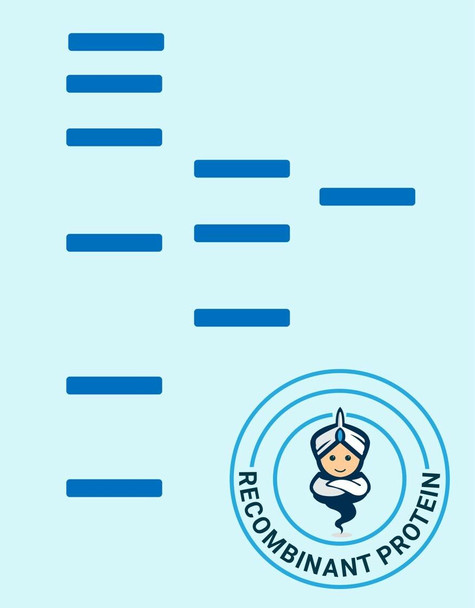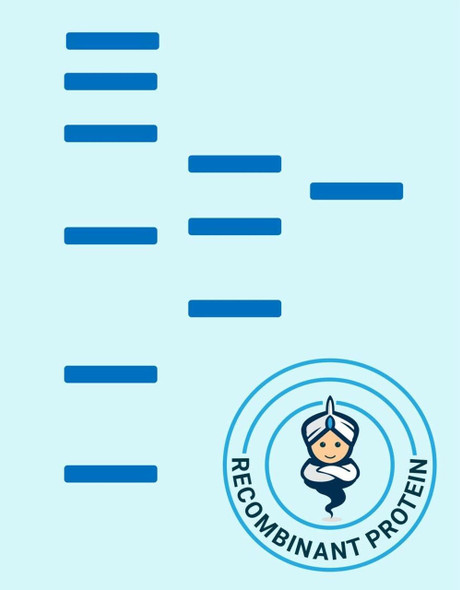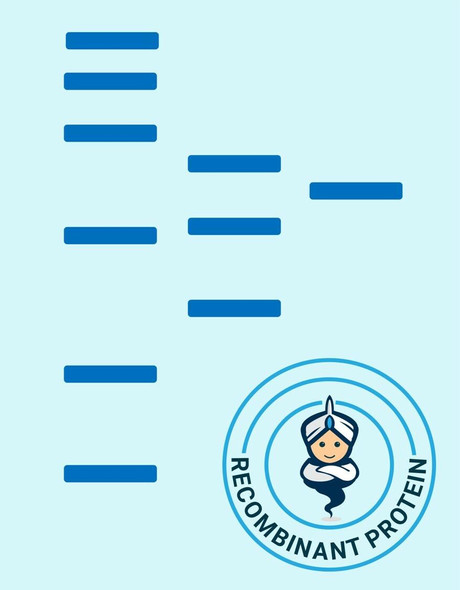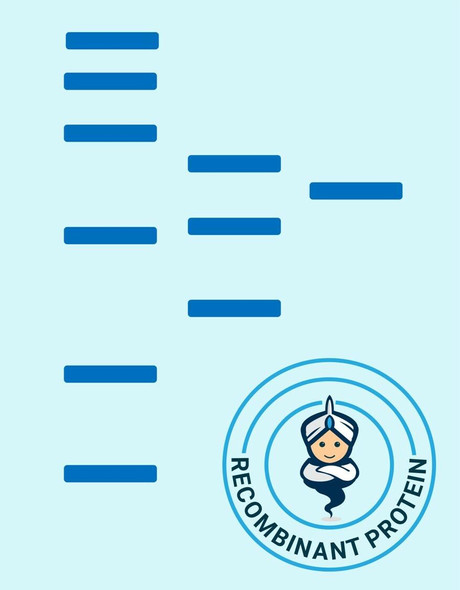Human KCNMB3 Recombinant Protein (RPPB3776)
- SKU:
- RPPB3776
- Product Type:
- Recombinant Protein
- Species:
- Human
- Uniprot:
- Q9NPA1
Frequently bought together:
Description
| Product Name: | Human KCNMB3 Recombinant Protein |
| Product Code: | RPPB3776 |
| Size: | 20µg |
| Species: | Human |
| Target: | KCNMB3 |
| Synonyms: | Potassium Channel Subfamily M Regulatory Beta Subunit 3, PotassiumLarge Conductance Calcium-Activated Channel, Subfamily M Beta Member 3, Calcium-ActivatedPotassium Channel, Subfamily M Subunit Beta-3, Charybdotoxin Receptor SubunitBeta-3, Big Potassium Channel Beta Subunit 3, Maxi K Channel Subunit Beta-3, MaxiK Channel Beta-Subunit 3, BK Channel Beta Subunit 3, BKChannel Subunit Beta-3, K(VCA)BETA-3, SLO-BETA-3,BKBETA3, Hbeta3, KCNMB2, KCNMBL, Large Conductance, Voltage And Ca2+ ActivatedPotassium Channel Maxi K Beta 3 Subunit, Calcium-Activated Potassium ChannelRegulatory Subunit, SLOBETA3, Calcium-activated potassium channel subunitbeta-3. |
| Source: | Escherichia Coli |
| Physical Appearance: | Sterile Filtered colorless solution. |
| Formulation: | KCNMB3protein solution (1mg/ml) containing 20mM Tris-HCl buffer (pH 8.0), 0.4M UREAand 10% glycerol. |
| Stability: | Store at 4°C if entire vial will be used within 2-4 weeks.Store, frozen at -20°C for longer periods of time. For long term storage it is recommended to add a carrier protein (0.1% HSA or BSA).Avoid multiple freeze-thaw cycles. |
| Purity: | Greaterthan 85.0% as determined by SDS-PAGE. |
| Amino Acid Sequence: | MGSSHHHHHH SSGLVPRGSH MGSKPFMLSI QREESTCTAI HTDIMDDWLD CAFTCGVHCH GQGKYPCLQVFVNLSHPGQK ALLHYNEEAV QINPKCFYTP KCHQDRNDLL NSALDIKEFF DHKNGTPFSC FYSPASQSEDVILIKKYDQ |
The KCNMB3 belongs to a family of 4 auxiliary beta subunits found in the mammalian genome, which associate with Slo1 alpha subunits and regulate BK channel function. In humans, the KCNMB3 gene is comprised of 4 N-terminal alternative exons which produce 4 functionally distinct beta3 subunits, beta3a-d. Three variants, beta3a-c, display kinetically distinct inactivation behaviors.
KCNMB3 Human Recombinant produced in E.Coli is a single,non-glycosylated polypeptide chain containing 149 amino acids (82-207 a.a) andhaving a molecular mass of 16.8kDa.KCNMB3 is fused to a 23 amino acid His-tag at N-terminus& purified by proprietary chromatographic techniques.
| UniProt Protein Function: | KCNMB3: Regulatory subunit of the calcium activated potassium KCNMA1 (maxiK) channel. Modulates the calcium sensitivity and gating kinetics of KCNMA1, thereby contributing to KCNMA1 channel diversity. Alters the functional properties of the current expressed by the KCNMA1 channel. Isoform 2, isoform 3 and isoform 4 partially inactivate the current of KCNBMA. Isoform 4 induces a fast and incomplete inactivation of KCNMA1 channel that is detectable only at large depolarizations. In contrast, isoform 1 does not induce detectable inactivation of KCNMA1. Two or more subunits of KCNMB3 are required to block the KCNMA1 tetramer. Belongs to the KCNMB (TC 8.A.14.1) family. KCNMB3 subfamily. 4 isoforms of the human protein are produced by alternative splicing.Protein type: Membrane protein, multi-pass; Membrane protein, integralChromosomal Location of Human Ortholog: 3q26.3-q27Cellular Component: voltage-gated potassium channel complex; integral to plasma membrane; plasma membraneMolecular Function: calcium-activated potassium channel activity; potassium channel regulator activityBiological Process: regulation of action potential; synaptic transmission; generation of action potential; detection of calcium ion; blood coagulation; potassium ion transport |
| UniProt Protein Details: | |
| NCBI Summary: | MaxiK channels are large conductance, voltage and calcium-sensitive potassium channels which are fundamental to the control of smooth muscle tone and neuronal excitability. MaxiK channels can be formed by 2 subunits: the pore-forming alpha subunit and the modulatory beta subunit. The protein encoded by this gene is an auxiliary beta subunit which may partially inactivate or slightly decrease the activation time of MaxiK alpha subunit currents. Alternative splicing results in multiple transcript variants. A related pseudogene has been identified on chromosome 22. [provided by RefSeq, Jul 2009] |
| UniProt Code: | Q9NPA1 |
| NCBI GenInfo Identifier: | 90111824 |
| NCBI Gene ID: | 27094 |
| NCBI Accession: | Q9NPA1.2 |
| UniProt Secondary Accession: | Q9NPA1,Q9NPG7, Q9NRM9, Q9UHN3, B7Z9C9, D3DNR2, E9PER5 |
| UniProt Related Accession: | Q9NPA1 |
| Molecular Weight: | 19,474 Da |
| NCBI Full Name: | Calcium-activated potassium channel subunit beta-3 |
| NCBI Synonym Full Names: | potassium large conductance calcium-activated channel, subfamily M beta member 3 |
| NCBI Official Symbol: | KCNMB3�� |
| NCBI Official Synonym Symbols: | HBETA3; KCNMB2; KCNMBL; BKBETA3; SLOBETA3; SLO-BETA-3; K(VCA)BETA-3�� |
| NCBI Protein Information: | calcium-activated potassium channel subunit beta-3; BK channel subunit beta-3; maxi K channel subunit beta-3; charybdotoxin receptor subunit beta-3; calcium-activated potassium channel regulatory subunit; calcium-activated potassium channel, subfamily M subunit beta-3; large conductance, voltage and Ca2+ activated potassium channel Maxi K beta 3 subunit |
| UniProt Protein Name: | Calcium-activated potassium channel subunit beta-3 |
| UniProt Synonym Protein Names: | BK channel subunit beta-3; BKbeta3; Hbeta3; Calcium-activated potassium channel, subfamily M subunit beta-3; Charybdotoxin receptor subunit beta-3; K(VCA)beta-3; Maxi K channel subunit beta-3; Slo-beta-3 |
| Protein Family: | Calcium-activated potassium channel |
| UniProt Gene Name: | KCNMB3�� |
| UniProt Entry Name: | KCMB3_HUMAN |










